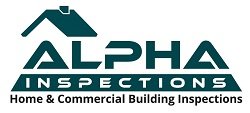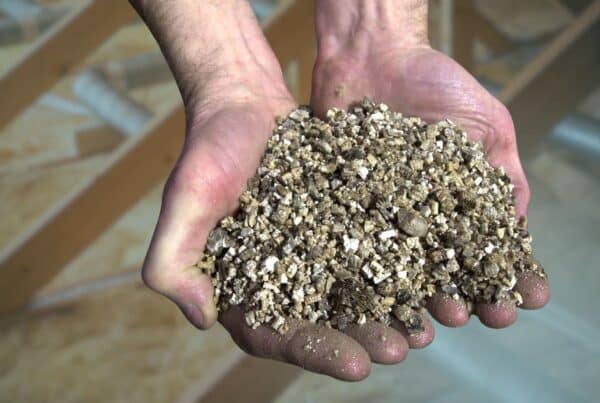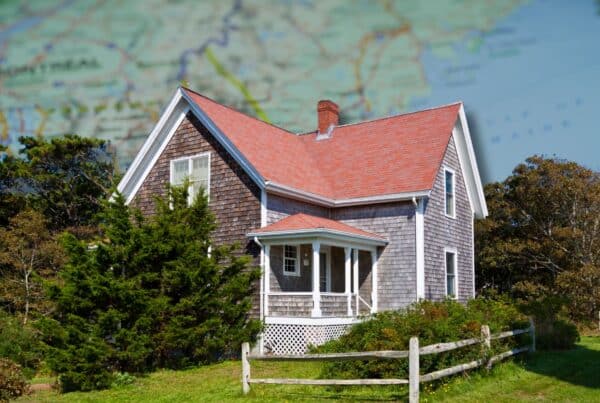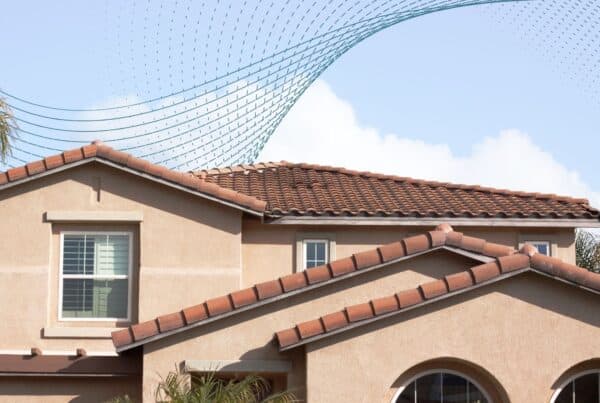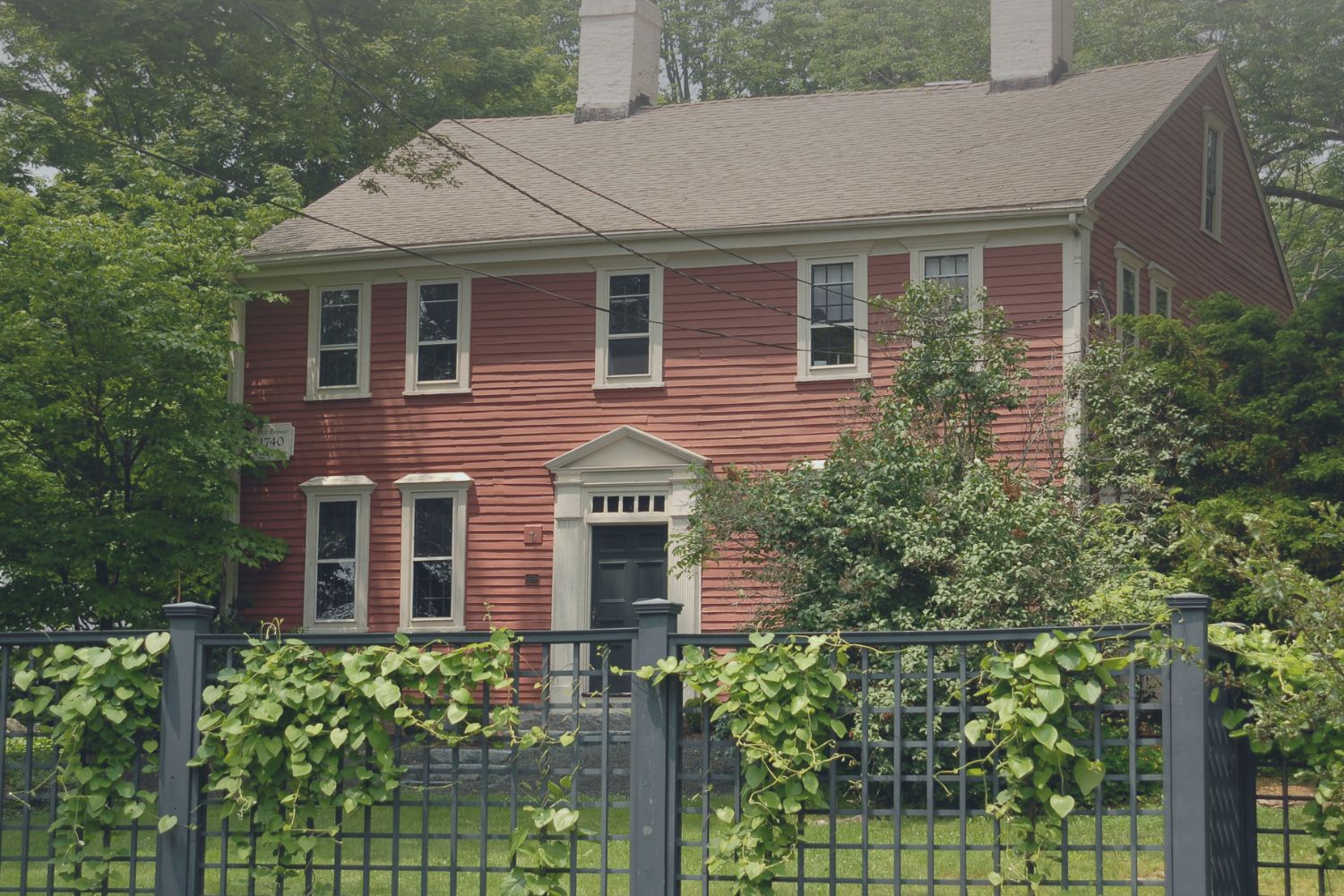
New England style homes are known for their timeless design and solid craftsmanship. From Cape Cod cottages to stately Colonials, these homes reflect the region’s history and charm. But beneath that classic exterior, many of these properties hide unique challenges that only a skilled inspector can uncover.
If you’re buying or maintaining a New England style home, an inspection can reveal how well the structure has aged and what repairs may be needed to preserve its character.
In this guide, we’ll explore how home inspectors evaluate these homes and what homeowners across New Hampshire, Maine, and Massachusetts should know before their next inspection.
What Are Distinct Features of New England Style Homes?
New England architecture draws heavily from early American and Colonial influences. Each variation has its own structural and maintenance quirks that affect how inspectors approach the job.
Common Types of New England Style Homes
| Style | Key Features | Inspection Focus |
|---|---|---|
| Cape Cod | Symmetrical layout, steep roof, dormers, central chimney | Roofing wear, attic ventilation, insulation levels |
| Colonial | Two-story design, central staircase, wood siding | Foundation settlement, framing, siding rot |
| Victorian | Decorative trims, towers, ornate woodwork | Lead paint, plumbing updates, window efficiency |
| Farmhouse | Large porches, gabled roof, open floor plan | Crawl space moisture, roof drainage, settling |
| Saltbox | Long rear roof slope, central chimney | Roof framing, attic insulation, siding condition |
Inspectors trained in these styles know what’s typical versus what’s a sign of concern. Understanding the design helps them evaluate the home’s safety, efficiency, and long-term stability.
Structural, Foundation, and Roofing
The foundation is the first thing inspectors assess in older New England homes. Many were built with stone, brick, or early concrete materials that can shift or deteriorate over time.
According to The U.S. Department of Housing and Urban Development (HUD), foundation and structural movement account for over 20% of all serious defects identified during home inspections nationwide.
An inspector checks for cracks, uneven floors, or doors that do not close properly, which may indicate foundation movement.
They also look for moisture intrusion, especially in basements and crawl spaces where older homes often lack modern waterproofing.
In colder states like New Hampshire and Maine, inspectors pay close attention to frost heave damage caused by expanding soil during freeze-thaw cycles.
Depending on the home, repair recommendations may include drainage improvements, vapor barriers, or foundation reinforcement.
New England’s harsh winters and wet springs make the roof one of the most critical inspection areas. Many older homes still have their original roof framing or multiple layers of shingles.
Inspectors will evaluate…
- Roof material: Asphalt shingles, slate, or metal.
- Flashing and drip edges: Signs of rust or gaps.
- Attic ventilation: Poor airflow can lead to ice dams.
- Chimneys: Cracked mortar, leaning structures, or missing caps.
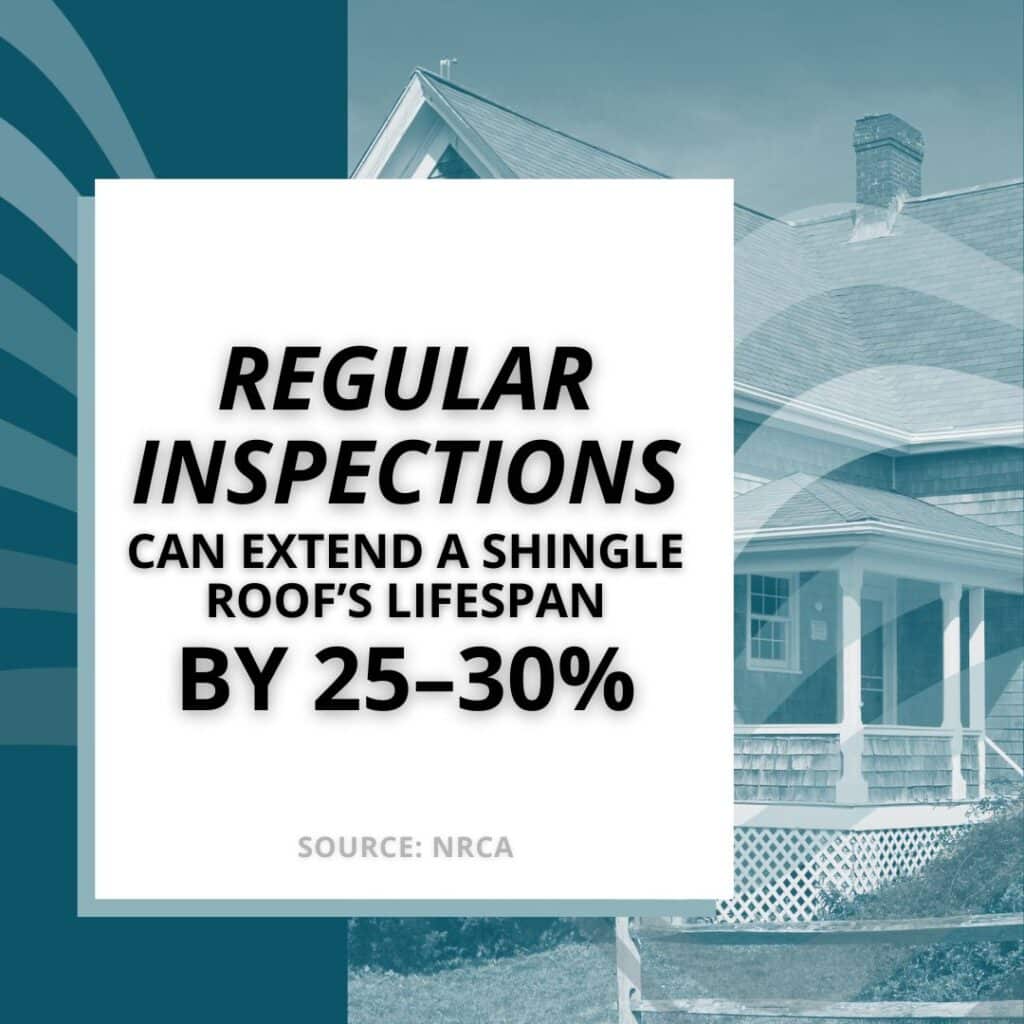
In homes with central chimneys, inspectors look closely for gaps between the flue and framing, which can pose fire hazards. Proper sealing and flashing are essential to prevent water infiltration and structural damage.
Siding, Trim, and Entries
Classic New England style homes often feature wood clapboard or shingle siding. Over time, this material can develop rot, insect damage, or peeling paint.
Inspectors check for soft spots, gaps, or areas where moisture has penetrated behind the siding. In historic homes, they also look for signs of lead paint, which was widely used before the 1970s.
Well-maintained wood siding can last for decades with regular painting and caulking. If issues are found, inspectors may recommend replacement of isolated boards or professional lead-safe renovation.
Energy efficiency is also a major concern in older New England homes. That means the windows and doors are major factors here.
Many of these homes still have single-pane windows that allow drafts and moisture to enter.
Inspectors examine…
- Window glazing and seals
- Frame rot or wood decay
- Door alignment and insulation gaps
- Proper latching and weatherstripping
If historic preservation is important, inspectors may suggest using storm windows or retrofitted inserts instead of full replacements to maintain the home’s original look while improving comfort and efficiency.
Insulation and Ventilation
Older homes in the region were built long before modern energy standards. Some have little to no insulation in walls or attics.
Inspectors use thermal imaging or moisture meters to locate cold spots and air leaks. Common areas of concern include:
- Attic floor gaps
- Uninsulated rim joists
- Drafty crawl spaces
- Poorly sealed utility penetrations
Proper insulation and ventilation work together. Without adequate airflow, moisture can build up in attics, leading to mold or roof damage.
Inspectors will often note where adding baffles, vents, or vapor barriers can help balance temperature and moisture levels.
Electrical System
New England style homes built before the 1970s may still have outdated wiring or undersized panels.
Inspectors carefully review these systems to ensure safety.Common issues include:
- Knob-and-tube wiring: Outdated and unsafe for modern loads.
- Fuse boxes: Replaced today by circuit breakers.
- Ungrounded outlets: Common in older walls.
- Improper DIY work: Additions done without permits.
Inspectors test outlets, look for overloaded circuits, and confirm that electrical panels meet current code. Any red flags are documented for repair by a licensed electrician.
Plumbing and Heating
In older homes, plumbing often includes galvanized pipes that can rust from the inside, restricting water flow. Inspectors look for corrosion, leaks, and improper drainage slopes.
For heating, many older properties still use boilers or radiators. Inspectors evaluate their age, efficiency, and maintenance records. They also check for proper ventilation in mechanical rooms to ensure safe operation.
Modern updates like tankless water heaters or ductless mini-split systems are noted as positive upgrades that improve comfort and energy use.
Moisture and Drainage Concerns
Because of heavy rain and snow, water management is a major concern in New England homes. Inspectors assess grading, downspouts, and sump pump systems to see how well they move water away from the foundation.
Inside, they check for signs of chronic dampness, such as efflorescence on basement walls or musty odors. Even small leaks can lead to structural or mold problems if ignored.
Improving gutters, sealing cracks, or adding dehumidifiers are often recommended to reduce moisture risk and preserve interior air quality.
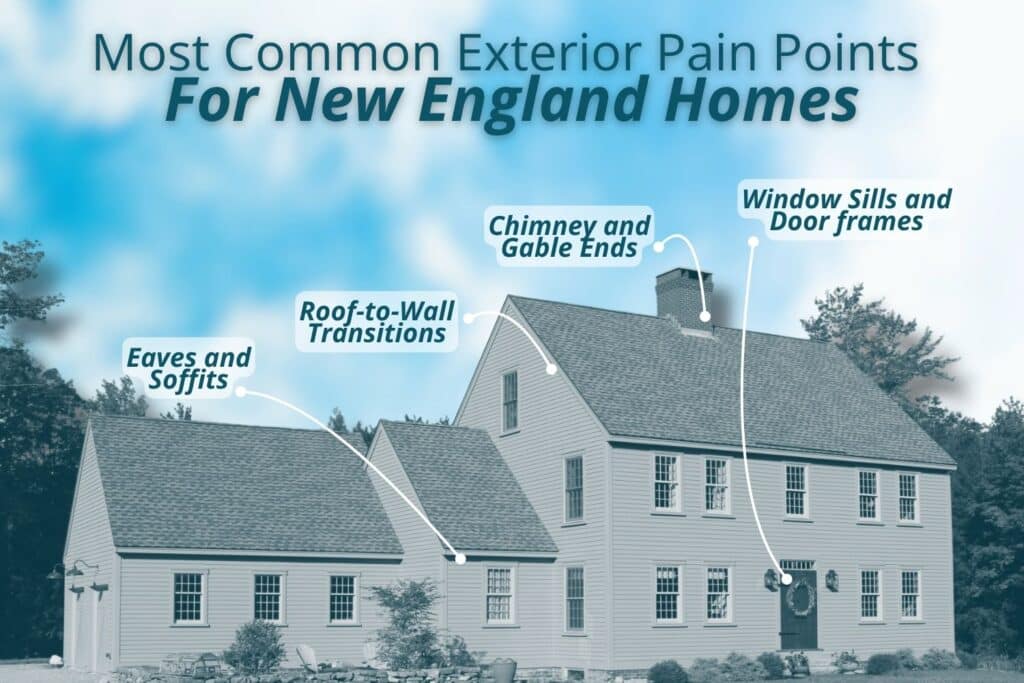
Environmental and Other Safety Factors
Homes built decades ago often contain materials no longer considered safe. Inspectors look for possible hazards such as:
- Asbestos insulation around pipes or ducts
- Lead paint on trim, windows, or walls
- Radon gas entering through basement floors
- Mold in poorly ventilated spaces
Alpha Building Inspections provides specialized environmental testing for radon and air quality. These services give homeowners a fuller picture of indoor safety and help them plan safe, modern renovations without losing the home’s original style.
Historic Preservation & Limitations
For many New England homeowners, maintaining the property’s historic charm is just as important as improving function. Inspectors familiar with historic structures understand how to balance preservation with modernization.
They assess which components are original, such as antique wood beams or handmade brick chimneys, and document areas where restoration can protect the home’s character.
Alpha Building Inspections often works with homeowners and contractors to provide inspection reports tailored for historic renovation projects, ensuring upgrades meet both safety and preservation goals.
Seasonal Stress and Weather Impacts
New England’s four-season climate puts constant stress on older homes. Winter snow loads, spring rain, and summer humidity all contribute to gradual wear.
Inspectors pay attention to seasonal vulnerabilities such as:
- Ice dam formation on roofs
- Frost heave near foundations
- Wood swelling during humid months
- Paint blistering due to heat or moisture
By understanding these patterns, inspectors can recommend preventive maintenance that protects a home’s exterior and structure year-round.
Related Questions
How Often Should a New England Style Home Be Inspected?
At least once every few years, or before major repairs or purchases. Older homes benefit from more frequent inspections to monitor ongoing wear. Get a quote for your inspection today.
Are Older New England Homes Harder to Maintain?
They can require more attention, but with regular maintenance and updates, they remain strong investments. Many issues are preventable with proper drainage, insulation, and ventilation.
Do I Need Radon or Air Quality Testing?
Yes. Many New England homes have basements or crawl spaces where radon and humidity can build up. Testing confirms your home’s safety and air quality.
Can a Pre-Listing Inspection Help Me Sell?
Absolutely. A pre-listing inspection identifies issues early, helping you make repairs or set realistic expectations before listing your property.
When to Call a Professional
If you are buying, selling, or renovating a home in New Hampshire, Maine, or Massachusetts, scheduling an inspection with a trusted professional is essential.
Alpha Building Inspections brings regional expertise and detailed reporting to help you understand how well your home’s systems are performing. Their team identifies hidden structural issues, energy inefficiencies, and safety concerns specific to older properties.
An experienced inspector ensures that each part of your home, from the foundation to the roof, continues to reflect the strength and charm New England homes are known for.
Conclusion
New England style homes stand as symbols of craftsmanship, tradition, and durability. With the right care, they can last for generations. But maintaining these homes requires insight into how their materials and structures respond to the region’s climate.
A detailed inspection is the best way to preserve both beauty and value. Alpha Building Inspections helps homeowners across New England protect their properties with inspections that blend technical precision with local expertise.
If you own or are purchasing a classic New England home, schedule an inspection today to keep your investment strong and your home safe for years to come.
